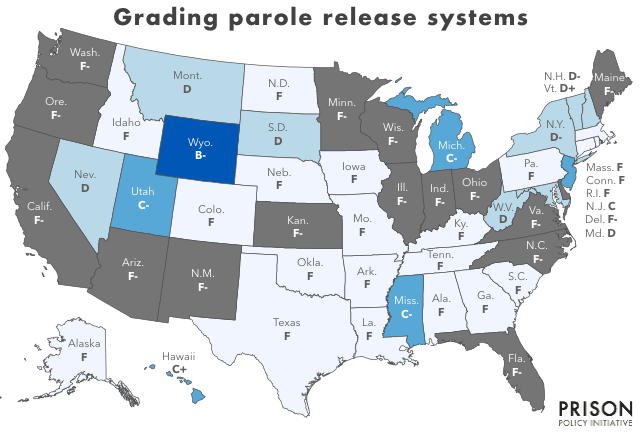- Click here for the article.
From arrest to sentencing, the process of sending someone to prison in America is full of rules and standards meant to guarantee fairness and predictability. An incredible amount of attention is given to the process, and rightly so. But in sharp contrast, the processes for releasing people from prison are relatively ignored by the public and by the law. State paroling systems vary so much that it is almost impossible to compare them.
Sixteen states have abolished or severely curtailed discretionary parole, and the remaining states range from having a system of presumptive parole — where when certain conditions are met, release on parole is guaranteed — to having policies and practices that make earning release almost impossible.
Parole systems should give every incarcerated person ample opportunity to earn release and have a fair, transparent process for deciding whether to grant it. A growing number of organizations and academics have called for states to adopt policies that would ensure consistency and fairness in how they identify who should receive parole, when those individuals should be reviewed and released, and what parole conditions should be attached to those individuals. In this report, I take the best of those suggestions, assign them point values, and grade the parole systems of each state.
Sadly, most states show lots of room for improvement. Only one state gets a B, five states get Cs, eight states get Ds, and the rest either get an F or an F-.

How we graded and what distinguishes a fair and equitable parole system.
To assess the fairness and equity of each state’s parole system, we looked at five general factors:
Whether a state’s legislature allows the parole board to offer discretionary parole to most people sentenced today; (20 pts.)
The opportunity for the person seeking parole to meet face-to-face with the board members and other factors about witnesses and testimony; (30 pts.)
The principles by which the parole board makes its decisions; (30 pts.)
The degree to which staff help every incarcerated person prepare for their parole hearing; (20 pts.)
The degree to which the parole board is transparent in the way it incorporates evidence-based tools. (20 pts.)